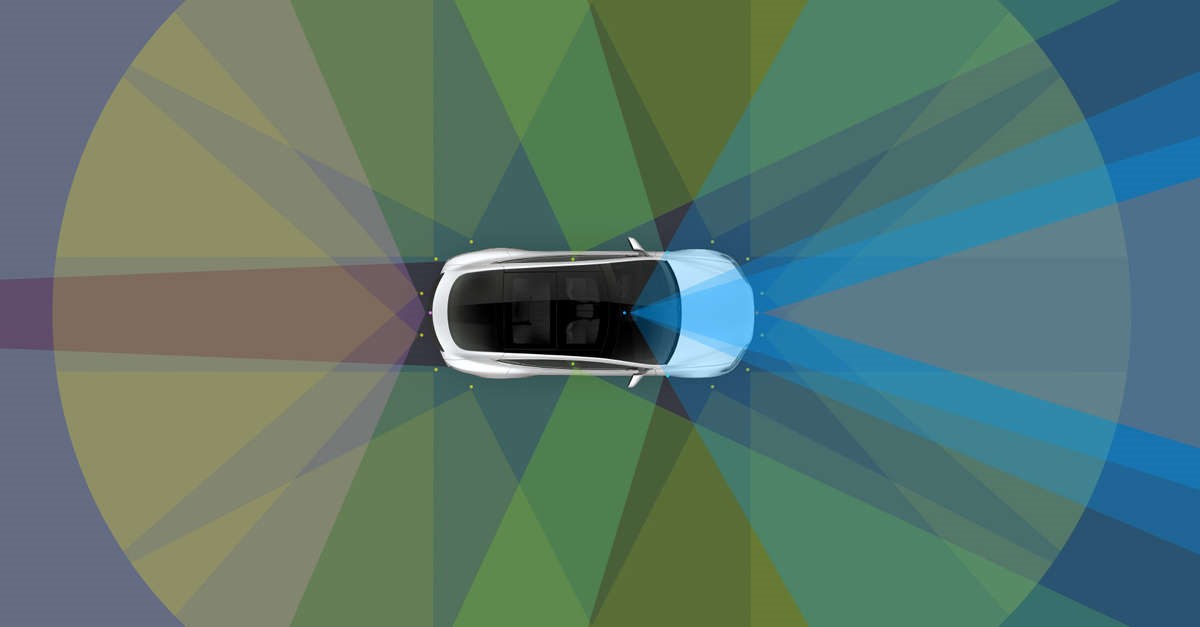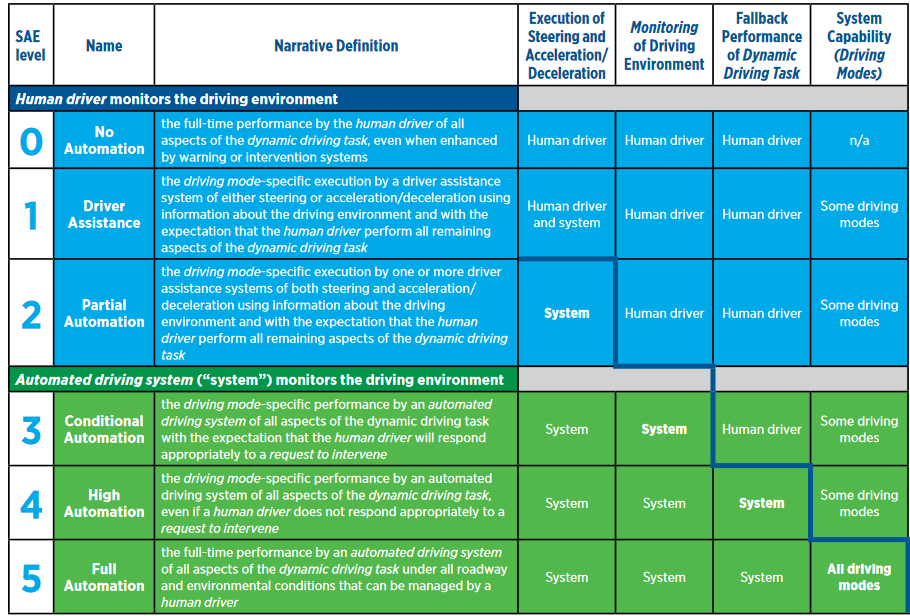
Exactly one year after Tesla boldly declared that “fully autonomous” vehicles are three years away, the automaker announced that all Teslas manufactured from hereon in will include the hardware needed to be fully autonomous. The company believes it’ll achieve an autonomy level of 5 — full automation, according to the SAE International — using a combination of eight cameras, ultrasonic sensors, a new radar system, and a beefy Titan-class NVIDIA GPU.
Hardware
Tesla reveals its new hardware configuration just one month after swapping the Mobileye’s camera with a front-facing radar system as the primary sensor for its autopilot. Mobileye’s camera-based object detection system was held to be responsible for company’s first fatal accident in 140 million miles last summer, where a Model S failed to detect a white truck crossing its path against a clear sky. The new radar resolves this issue, being better able to see through adverse weather conditions up to a range of 160 meters.
By hedging its vision system with radar, Tesla sets itself apart from the Google, Ford, and the majority of self-driving projects reliant on Lidar (light-sensitive laser imaging radar) units. The choice may keep initial costs lower in the short-term before heavy investment from automakers spurs lower-cost Lidar solutions.
Newly built vehicles feature an upgraded camera system comprised of eight 360-degree cameras: the forward-facing camera sees up to 250 meters ahead, while seven remaining cameras raise the field of view and range from 60 to 150 meters. The vehicle’s 12 ultrasonic cameras double the range of their predecessors, out to eight meters, while the new NVidia GPU serving as the vision system’s brain is 40 times more powerful than before. When it comes to powering the deep-learning computations needed for self-driving awareness, GPUs are 20 to 50 times more efficient than traditional CPUs.

Compared to Autopilot 8.0
Autopilot has been available in all Teslas built since 2014, but the existing Autopilot 8.0 feature isn’t “autonomous driving” insomuch as a glorified cruise control. It maintains lane fidelity when a human driver would otherwise stray, parallel parks itself, stops and goes with traffic and adjusts its speed within the legal limit, and detects vehicles in blind spots to prevent the accidents caused by distracted humans.
As far as SAE’s automated driving rating is concerned, the Autopilot 8.0 only clocks in at Level 2, “partial automation,” requiring human drivers to monitor the driving environment. It’s not fully autonomous, and even advises drivers to maintain their hands on the steering wheel. The driver who died last summer in an accident involving the autopilot feature did not maintain control of the steering wheel.
The upcoming production line not only has all of the existing features, but to hear Tesla tell it, it sounds like having a cyber-chauffeur:
Your Tesla will figure out the optimal route, navigate urban streets (even without lane markings), manage complex intersections with traffic lights, stop signs and roundabouts, and handle densely packed freeways with cars moving at high speed. When you arrive at your destination, simply step out at the entrance and your car will enter park-seek mode, automatically search for a spot, and park itself. A tap on your phone summons it back to you.
The fine print
A major tradeoff to reaching Level 5 within the next two years is that cars built with the new hardware temporarily have fewer features than is available in existing models — that means no Automated Emergency Braking (AEB) until Tesla finishes testing the software with the new hardware configuration. Obtaining the over-the-air update to unlock the complete self-driving package will cost users $12,000 compared to $7,500 for Enhanced Autopilot, or $3,000 for the current iteration.
Source: Tesla
Advertisement
Learn more about Electronic Products Magazine





